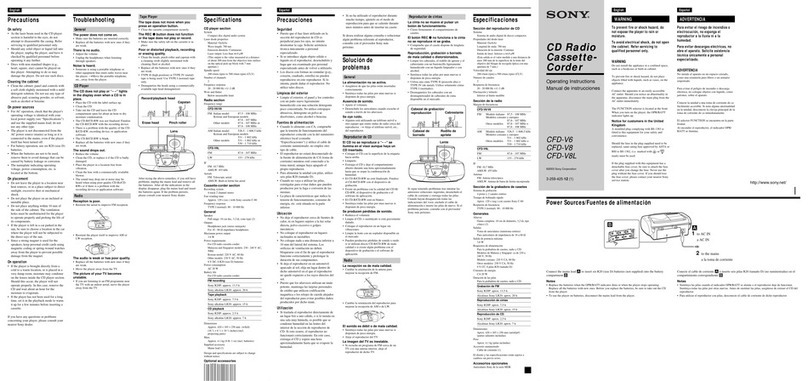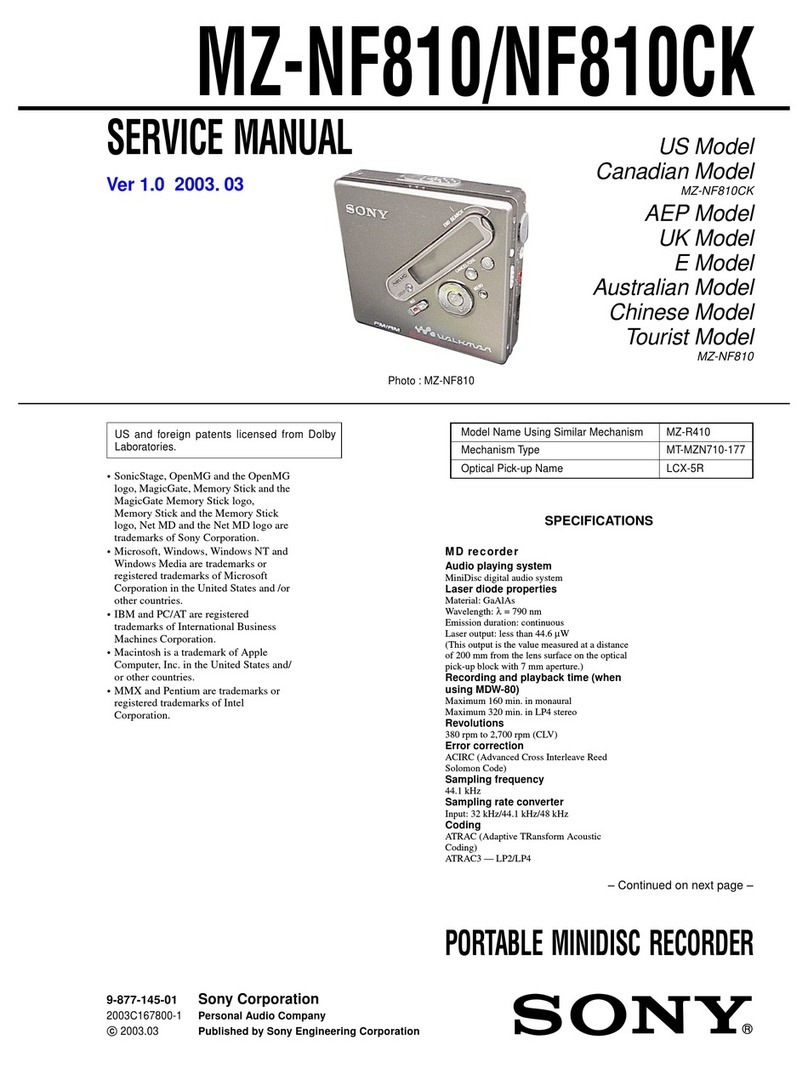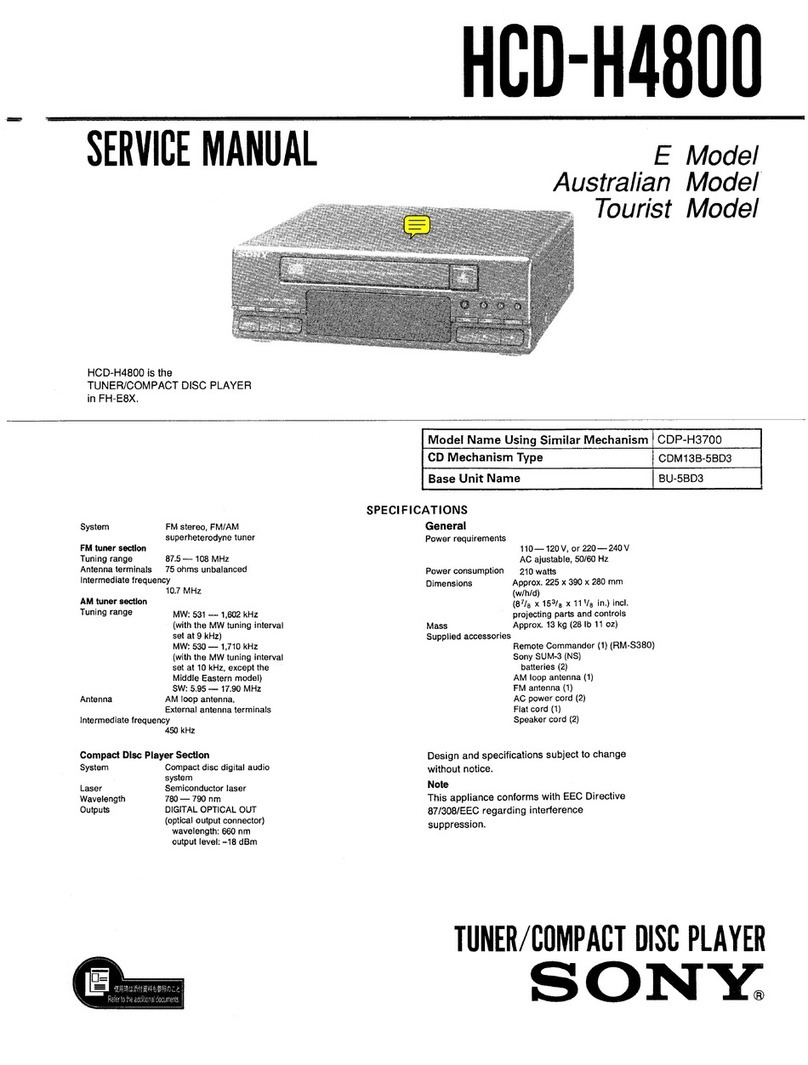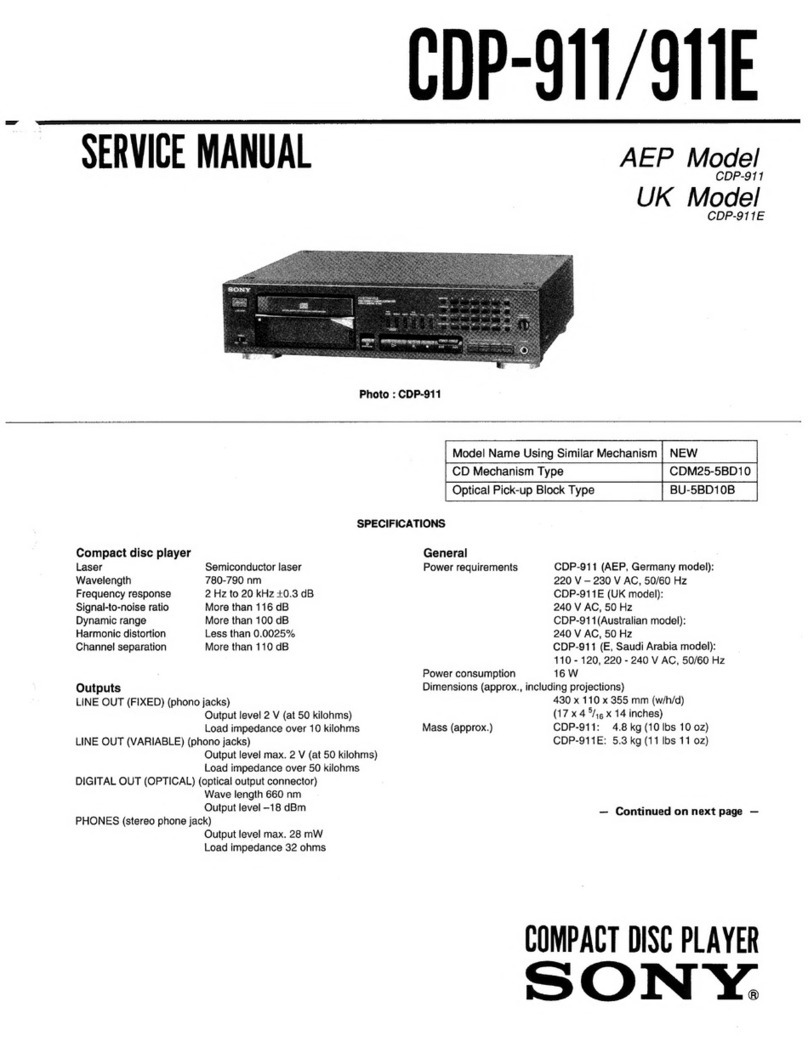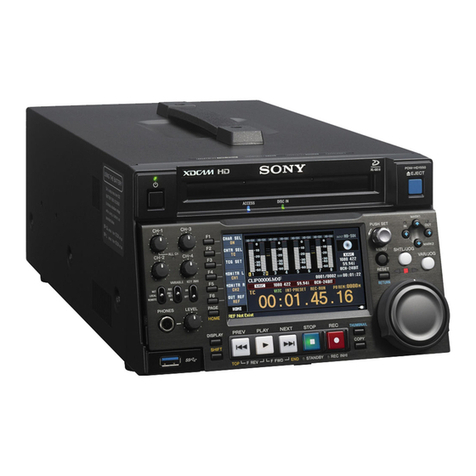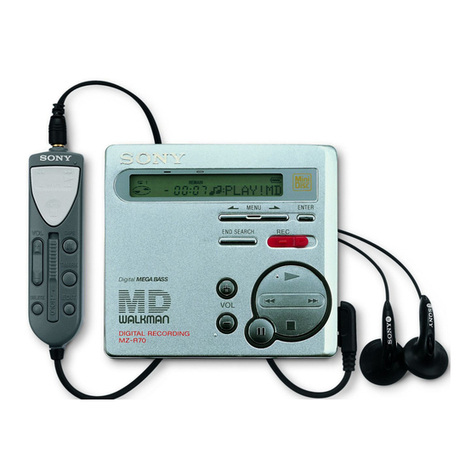
— 10 —
Focus/Tracking Gain Adjustment
A servo analyzer is necessary in order to perform this adjustment
exactly.
However, this gain has a margin, so even if it is slightly off,
there is no problem. Therefore, do not perform this adjustment.
Focus/tracking gain determines the pick-up follow-up relative to
mechanical noise and mechanical shock when the 2-axis device
operate. However, as these reciprocate, the adjustment is at the point
where both are satisfied.
• When gain is raised, the noise when 2-axis device operates in-
creases.
• When gain is lowered, it is more susceptible to mechanical shock
and skipping occurs more easily.
This adjustment has to be performed upon replacing any of the fol-
lowing parts :
• Optical pick-up
• RV503 (Focus gain)
• RV502 (Tracking gain)
Normally, be sure not to move RV503 (focus gain) and RV502
(tracking gain).
– Focus GainAdjustment –
Procedure :
This adjustment is not performed. If focus gain RV503 is turned,
set to mechanical center.
– Tracking Gain Adjustment –
(perform at normal operation)
[MAIN BOARD] (Side B)
1. Place the optical pick-up level, horizontally. (If the optical pick-
up is not level, the2-axis device will beweighted and adjustment
cannot be done.)
2. Connect the oscilloscope between IC501 0pin (TEO) and #º
pin (VC) on the MAIN board.
3. Set the disc (YEDS-18) and Press the ^(+) key.
4. Turn RV502 slightly clockwise (tracking gain drops) and obtain
a waveform with a fundamental wave (waveform has large
waves) as in Fig. 1 .
5. Turn RV502 slowly counterclockwise (tracking gain rises) until
the fundamental wave disappears (no large waves) as in Fig. 2.
6. Set RV502 to the position about 30°counterclockwise from the
position obtained in step 5. If RV502 contact point is more than
90°counterclockwise from mechanical center, tracking gain is
too high. In this case, readjust from step 4.
7. Press ^(+) or =keys and observe the 100 track jump
waveform. Check that no traverse waveform appears for both
^(+)or =directions. (See Fig. 3and 4.) It is acceptable
if the traverse waveform appears only now and then, but if it
appears constantly raise tracking gain slightly and check step 7
again.
8. Check that there is no abnormal amount of operation noise (white
noise) from the 2-axis device. If there is, tracking gain is too
high, readjust starting with step 4.
The waveforms are those measured with the oscilloscope set as
shown below.
• VOLT/DIV : 50mV
• TIME/DIV : 5mS
• Waveform when tracking gain lowered.
Fundamental wave appears (Large amplitude appears.)
• Waveform when fundamental wave disappears (Large
amplitude does not appear.)
• Waveform when no traverse waveform during 100 track jump.
(Brake application is smooth because of adjustment.)
• Waveform when no traverse waveform during 100 track jump.
(Brake application is poor because of adjustment.)
30 10
IC501
+
–
oscilloscope
(DC range)
IC501
#º
pin
(VC)
IC501
!º
pin
(TEO)
0
0
Fig. 1
Fig. 2
0V
100 track jump waveform
Fig. 3
0
100 track jump
waveform traverse waveform
Fig. 4




